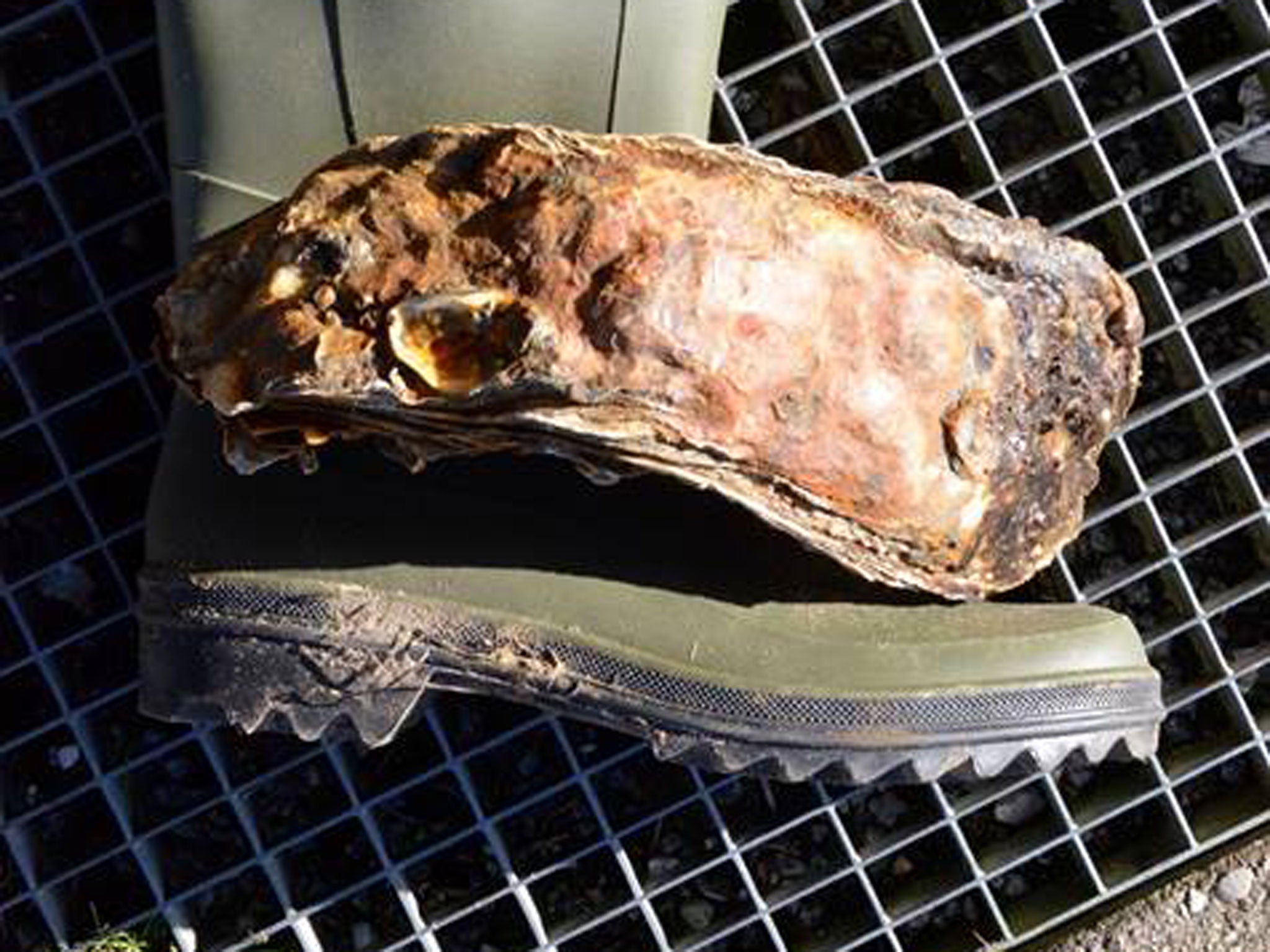World’s longest oyster found in Denmark is as big as a size 10 shoe – and still growing
… and no, it isn’t going to get eaten any time soon

Your support helps us to tell the story
From reproductive rights to climate change to Big Tech, The Independent is on the ground when the story is developing. Whether it's investigating the financials of Elon Musk's pro-Trump PAC or producing our latest documentary, 'The A Word', which shines a light on the American women fighting for reproductive rights, we know how important it is to parse out the facts from the messaging.
At such a critical moment in US history, we need reporters on the ground. Your donation allows us to keep sending journalists to speak to both sides of the story.
The Independent is trusted by Americans across the entire political spectrum. And unlike many other quality news outlets, we choose not to lock Americans out of our reporting and analysis with paywalls. We believe quality journalism should be available to everyone, paid for by those who can afford it.
Your support makes all the difference.Biologists in Denmark have discovered the world’s largest oyster, measuring in at nearly 14 inches long, and say that the giant mollusc is not done growing yet.
Experts at the Wadden Sea Centre on the country’s southwestern coast said they were taking good care of their new Guinness World Record-holding champion, and that it wouldn’t be ending up on anyone’s plate.
The oyster was found in October, and Klaus Melbye, head of the Wadden centre, was immediately called by his astonished staff.
They first compared the oyster to a European size 44 shoe – around a size nine and a half to 10 in the UK – a standard of measurement which is sadly not accepted by world record officials.
When Guinness did come in December, they measured the oyster at 35.5cm (13.97ins) long – and the record was made official at the start of this year.
Speaking to npr.org, Wadden centre biologist Christine Ditlefsen said that far from appearing in a seafood platter, the creature itself has a healthy appetite.
She said: “The oyster is still alive and is on display in our exhibition here at the Wadden Sea Centre. We feed it plankton algae and it eats well, so we hope that we can keep it alive for many years.
“It is 15-20 years old, and probably one of the first Pacific Oysters (Crassostrea gigas) that came to our part of the Wadden Sea. To know the exact age, we will have to wait until it dies a natural death [potentially another 15 years].
“After the oyster is dead it is possible to make a cut in the shell, and here it is possible to count the growth layers – and then we will know the exact age.”
Join our commenting forum
Join thought-provoking conversations, follow other Independent readers and see their replies
Comments